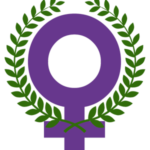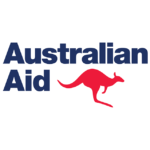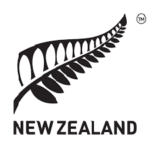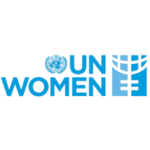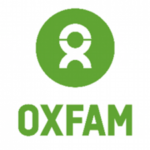6. Conclusion and Recommendations
| This research provides strong evidence that VWC’s comprehensive and integrated multi-stakeholder approach is effective in reaching out to young women and preventing further violence (secondary prevention). It also reinforces the statistically significant findings of the 2009 national prevalence research that VWC’s model is effective at reducing the overall prevalence of violence (primary prevention). |
This research provides strong evidence that VWC’s strategies to target young women have been effective at reducing further violence against them. It also provides further evidence – building on the statistically significant findings from the national prevalence study undertaken in 2009 – that VWC’s comprehensive and integrated model of multi-stakeholder prevention and response is effective at reducing violence against women (see Annex 2 for a summary of VWC’s approach).
While these findings are positive, VWC recognises that there remains much more to be done to reduce the prevalence of violence against young women and girls. It is important for periodic research to be undertaken by VWC to ensure that outreach strategies to young women continue to be effective in a rapidly changing social media environment, and to explore the effectiveness of messaging to young men.
Thirty recommendations were made to other agencies in VWC’s landmark 2009 national prevalence study, covering key actions that needed to be taken to prevent violence against women from ever occurring in the first place (primary prevention), strengthen support services for victims/survivors, strengthen the legal and policy framework, and to ensure that the inputs and funding provided by donor agencies are evidence-based. While some of these recommendations have been progressively implemented since the research report was published in 2011 and much good progress has been made by a range of national and local stakeholders, many are still relevant and require further effort to speed up progress towards eliminating violence against women and girls from Vanuatu. Similarly, a report published in 2016 by UN Women on Women’s and Children’s Access to the Formal Justice System in Vanuatu made over 50 specific recommendations; many of these also need to be followed up more assertively by law and justice sector agencies.[i] All the recommendations below are made because they emerge as priorities from the findings of the current research. However, some are adapted from the 2 research reports cited above, where relevant to the current findings, and in need of either urgent or wider implementation.
Prevention and response programs
The responses of government agencies, donor agencies, civil society organisations, chiefs, church and other community leaders need to be based on the following fundamental principles:
- violence under any circumstances is a crime;
- violence or abuse against women and girls can never be justified or condoned on the basis of any tradition, culture or custom (including bride price);
- women and girls have a right to live without violence;
- women and men are equal under Vanuatu’s Constitution; and
- women and children can never be “owned” by men or parents.[ii]
In addition to the principles above, a human rights and gender equality approach to the prevention and response of violence against women means that all training, prevention and response services must be clear about the causes of violence against women, versus the situations that may trigger violent incidents. Violence against women is caused by gender inequality in Vanuatu society; and violence reinforces the unequal power and control that many men have over their wives, partners, daughters, and other children under their care.
As an increasing number of local and international organisations are funded by donors to prevent and respond to violence against women, including many targeting young women and girls, the recommendations below are of the highest importance. They are relevant to all sectors, including faith-based organisations, INGOs, youth, sporting and community-based programs, and initiatives in the health, education, law and justice sectors, and the media, in addition to bilateral and multilateral donors and UN agencies implementing programs in Vanuatu. It is very positive that so many organisations are now engaged in preventing violence against women and children – and this in itself is an important outcome of the decades of work by VWC and other women’s civil society organisations in the Pacific region. However, it is noteworthy that to date, the VWC Network still receives very few direct referrals of girls, young women or adult women from several of the programs implemented by other agencies; this is a cause for concern and merits investigation by these agencies themselves.
Recommendations
- All community awareness/prevention, education, training and response programs to address violence against women and girls, by all stakeholders, must be explicitly based on a human rights and gender equality approach, and firmly grounded in the evidence base of what works to prevent and respond to gender based violence.
- All initiatives and organisations which aim to raise awareness or conduct community education and training to prevent violence against young women and girls, including those which carry out research, must ensure that there are clear referral protocols in place for young women, adult women and girls and boys who seek help during each prevention activity.
- Victims/survivors should be referred to the national VWC Network, rather than to people or agencies who are not specifically trained to provide counselling and assistance on violence against women, and who are not receiving ongoing counsellor supervision.
The findings of this research have confirmed that sexual violence against girls is still hugely under-reported, and that some girls are living with repeated and multiple forms of violence over many years until and after they turn 18, with little way of reporting and getting help unless they are assisted by a trusted adult. The findings also demonstrate that patterns of violence and inequality begin very early in relationships between young women and men, and that many young women live with extreme and multiple forms of physical, sexual and emotional violence and coercive control for many years before they are able to take action to seek help. Understanding the problem of violence against women and children, the capacity to recognise the key signs, and an openness to disclosure are essential for family members, friends, and potential support people in educational institutions to provide appropriate help to victims/survivors to stop the violence as early as possible.
The potential impacts on children of violence against their mothers is an area where more attention is needed. VWC’s national prevalence study demonstrated several psychological/emotional and educational impacts that may have long-term consequences for children, and some of these potential impacts have also been observed in the current research. Recent collaborations between the Ministry of Education and VWC – including a panel discussion for 2019 National Women’s Day – are a positive sign in relation to the recommendations below.
Recommendations
3.Youth training and other programs specifically targeting young women and men should include a focus on women’s and girls’ human rights and gender equality, sexual harassment, evidence of the high prevalence of violence against young women and girls in Vanuatu, its key features, and its devastating consequences for victims/survivors, their families, communities and the nation as a whole.
4.Training to recognise signs of violence against girls and young women and to respond appropriately should be provided at all levels of the education system, with referral protocols in place, including refresher training as needed for both new and longer-term staff.
This should include: Ministry of Education officials; Provincial Education Offices; principals and teachers in primary, secondary and tertiary education sectors; parents and teachers associations; and school counsellors.
Training to recognise the signs in children (boys and girls) and youth who are impacted by violence against women at home should also be provided, with appropriate referral protocols in place.
5.Male and female students must also have age-appropriate regular opportunities to learn about gender equality, human rights and violence against women and children, including the services that exist to help victims/survivors and their support networks.
Strengthening the legal and policy framework and access to justice
Both the national caseload and the case study database for the current research reveals inconsistent application of the FPA in some cases, despite the best efforts of many police and other law and justice personnel trained by VWC. The research also highlights the many difficulties associated with assisting children, and a failure to adequately protect children from ongoing and persistent sexual abuse, including in adoptive families.
The current research and VWC’s current caseload indicate that there are ongoing delays with accessing child maintenance, and inconsistencies in dealing with breaches of child maintenance orders. Some legal requirements associated with child maintenance, family maintenance and divorce law are gender-blind in practice, and these compound the difficulties faced by young women and adult women alike in accessing justice and claiming their rights.
Recommendations
6.The Vanuatu Police Force should, as a matter of urgency and in consultation with the VWC, review the practice of roundtables in cases of violence against women of all ages.
This is essential to ensure that the Vanuatu Police Force 2015 Family Violence Policy and Standard Operating Procedures (SOPs) are applied consistently in every case.[iii]
Clear directions need to be given to all police officers that the Police Act does not override the provisions of the FPA and the SOPs.
7.The Vanuatu Government should consider instructing the Law Reform Commission to undertake an urgent review of all aspects of marriage and family law matters, in order to develop a comprehensive family law that takes into account the prevalence, severity and impacts of violence against women and children. Different types of family situations should be considered as part of this review, including:
The current difficulties faced by women in de facto relationships with accessing child maintenance and in ensuring that these orders are enforced.
The current difficulties faced by married women who claim for family maintenance and who are separated from their husbands, as the husband has to be prosecuted first under the Maintenance of Family Act. This is a lengthy process for women, who must report to the police, and await investigation and prosecution, rather than being considered as an outright civil claim.
All other matters pertaining to marriage and family law, including relating to formal and informal adoption.
8.The Vanuatu Government should consider introducing a national policy and law on sexual harassment, including workplace provisions.
Further research on violence against woman and girls in Vanuatu
VWC’s next research project is a qualitative study on the links between custom, bride price, women’s human rights and bride price. This will further explore the findings in this area from both the 2009 prevalence study and the current research. VWC has advocated for funding to undertake a follow-up to the first national study on the prevalence of violence against women by 2024, to provide comparable data on prevalence and changes in attitudes, with the first survey conducted by VWC in collaboration with the Vanuatu National Statistics Office (VNSO) in 2009. VWC and VNSO used the WHO methodology and survey tool, which was slightly adapted for the Vanuatu context. VWC believes that a repeat of this same tool (with some further minor adaptations and updates) would provide the most reliable and valid evidence of changes in prevalence since the 2009 baseline study; no funding has been secured to date.
Many lessons were learned in the adaptation of the WHO survey tool and VSNO’s sampling strategy, which included 8 survey sites (the 2 urban areas and 6 provinces, including all major islands). This strategy was designed to ensure that the survey findings would have credibility with national, provincial and local island leaders, and enabled VWC to target key groups at the provincial level with its community education and advocacy messages (see section 5.1.4). Having VWC lead the survey – a local women’s organisation with a long track record and consistent approach to providing prevention and response services in an integrated and multi-faceted fashion – had a profound effect on the extent to which the survey findings were accepted and acted upon nationally, provincially and at the community level. The WHO methodology was widely used throughout the Pacific in the first round of prevalence studies undertaken through SPC (the Pacific Community), UNFPA and other national women’s organisations with Australian Government aid support.
The findings of the current research on cases of child sexual abuse in adoptive families – where girls are living away from both the birth mother and father – are also seen in VWC’s national caseload, and require further investigation. This is an important area for future qualitative and quantitative research and could be explored in future national prevalence studies, with only minor adaptations to the WHO methodology used by VWC in the 2009 study.
Finally, the very low level of reporting of sexual harassment among young women deserves further investigation. In addition to a quantitative study to explore prevalence, a qualitative study would also assist to spread light on newer forms of sexual harassment and image-based abuse through social media, the links between sexual harassment and the various forms of violence against women and girls and coercive control, and its impacts on victims/survivors – and on national efforts by a range of agencies to promote gender equality and reduce violence against women and girls.
Recommendations
9. Donors should consider funding VWC, in collaboration with VNSO, to undertake a follow-up study on the prevalence of violence against women by 2024, using the WHO methodology that was adapted for the baseline Vanuatu study undertaken in 2009.
10. Further research is also needed on the findings of this research regarding the high proportion of child sexual abuse cases occurring in adoptive families, and the implications of this finding for Vanuatu’s child protection provisions. This should ideally be explored in future national prevalence studies.
11.Consideration should also be given to undertaking research on the prevalence of sexual harassment by age, and its impacts on young women and girls.
Annex 2: Summary of Vanuatu Women’s Centre’s national program and approach
[i] VWC and VNSO 2011 op. cit.: 184-189; and UN Women 2016 Women’s and Children’s Access to the Formal Justice System in Vanuatu: 25-37.
[ii] This text and recommendation 1 is adapted from VWC and VNSO 2011 op. cit.:184.
[iii] This recommendation is adapted from UN Women 2016 op. cit.: 29.
